Speaker
Description
Wastewater - based epidemiology (WBE) is a promising biomonitoring approach with the potential to provide direct information on human intake and exposure to food and environmental chemicals. WBE based on the normalisation method using a population biomarker 5-hydroxyindoleacetic acid (5-HIAA) is the aim of this study. This type of normalization technique has been previously used to detect various other compounds and adjusting different population biomarkers1, but to the best of our knowledge this is the first study tracking human exposure to mycotoxins.
For six weeks (from late June to early August) every working day a wastewater (WW) sample was collected from influent in a sewage treatment plant. Free deoxynivalenol was determined in all WW samples. Based on mycotoxin and 5-HIAA content in the samples an intake of deoxynivalenol and enniatins by the population in Riga was estimated.
The provisional intake of DON by the human population of Riga was estimated at 325 ng/kg b.w. that set by the European Food Safety Authority is in range of chronic dietary exposure (214 – 1014 ng/kg b.w. day) 2.
In worst case scenario (if excretion factors are 5% or lower) the sum of average provisional daily intake of enniatins is 1350 ng/kg b.w. day, indicating a potential risk of chronical exposure.

